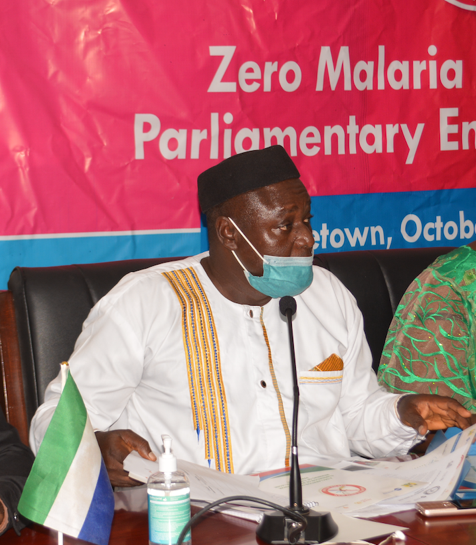Typhoid-Malaria: the evidence
The incidence of the compound diagnosis Typhoid-Malaria has recently become a worrying issue for public health practitioners in Sierra Leone. The diagnosis of typhoid-malaria is done at all levels of the healthcare delivery points including private practitioners and drug peddlers/quacks. Several people self medicate with malaria and typhoid fever drugs when experiencing fever; as they are of the opinion that clinicians at our health facilities will diagnose them with Typhoid-Malaria upon consultation. Laboratory tests most often come back with positives for both conditions; regardless of the social status of an individual, which to a large extent determines who contracts these conditions, especially typhoid fever. (Photo: Alhassan Kanu, author)
When examining the aetiology and mode of transmission of the two conditions; where typhoid fevers are water/food & sanitation-related and malaria, a vector (mosquito) borne disease, one maybe tempted to query the sensitivity of the laboratory tests that leads up to typhoid-malaria diagnosis.
Well, whatever the doubts, there is some scientific evidence that malaria and Typhoid fever sometimes occur in tandem.
Immunological defence mechanism leaves malaria patients vulnerable to deadly infection
The Medical Research Council (MRC) funded study, published in Nature Medicine has for the first time explained the link between malaria and salmonella infections, opening the way to more effective treatments.
Malaria patients are at high risk of developing fatal bacterial infections, especially salmonella infections. This is commonly believed to be due to generalised immunosuppression by malaria, whereby the entire immune system is weakened and compromised.
However, researchers at the London School of Hygiene & Tropical Medicine have discovered that the increased vulnerability to salmonella infections is a side effect of the body’s attempts to protect itself from the damaging effects of the malaria infection.
The researchers describe this defence mechanism as a trade-off, where the body fights one enemy but exposes itself to the other. This was demonstrated in their study exploring the connection between malaria and non-typhoid salmonella (NTS)- an infection which is particularly dangerous for children.
Children with malaria can develop anaemia, which puts them at higher risk of developing severe bacterial infections of the blood, caused in up to 70% of the cases by NTS. This infection is fatal in up to 25% of the infected children. To prevent these bacterial infections, or develop an effective treatment, scientists needed to understand the mechanism behind this connection between malaria and salmonella.
Professor Eleanor Riley, one of the lead authors of the study, says: “It is a widespread belief that malaria is an immunosuppressive disease; that once the disease is contracted, the patient will be susceptible to several other infections because of a compromised immune system.
Implications on Sierra Leone healthcare system
Drugs for the treatment of salmonella infections do not form part of the essential/tracer drugs package especially for the Peripheral Health Units, which are the first point of contact for over 60% of patients, especially the vulnerable groups of women and children.
This study does suggest that laboratories in the PHUs should be strengthened to precisely detect such cases. Equally so, drugs for salmonella treatment be made available in our health centres and all frontline health workers be capacitated to effectively manage typhoid-malaria cases.
Alhassan Kanu
Stay with Sierra Express Media, for your trusted place in news!
© 2012, https:. All rights reserved.





